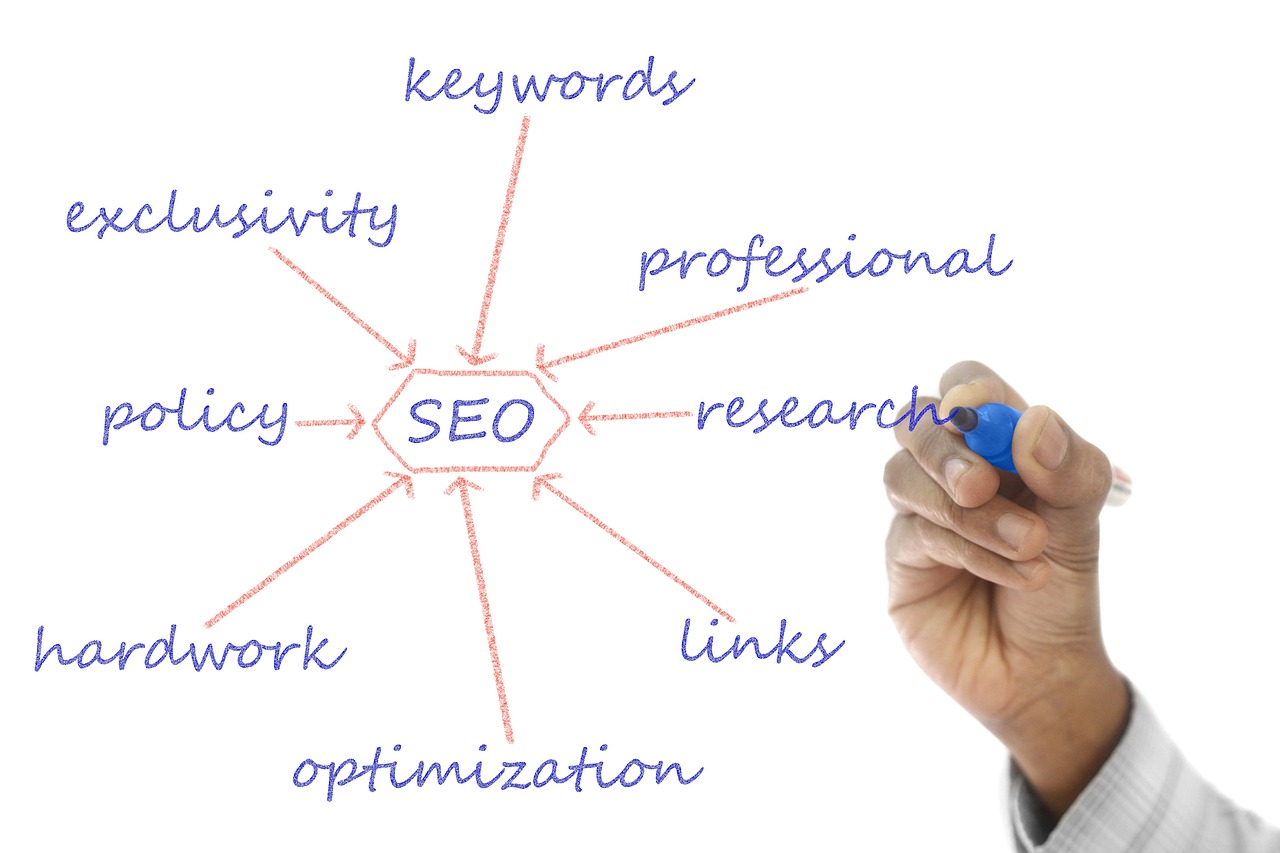This Article has been revised, edited and added to, by Poulomi Chakraborty.
- The Importance of Google My Business
- Local Citations and Directories
- Optimizing Your Website for Local SEO
- Managing Online Reviews and Reputation
- Leveraging Social Media for Local SEO
- Implementing Local Advertising Strategies
- Tracking and Analyzing Local SEO Performance
- Building a Local SEO-Optimized Website
- Leveraging Customer Insights and Feedback
- Building and Maintaining Local Listings
- Harnessing the Power of Local Events and Sponsorships
- Utilizing Content Marketing for Local SEO
- Building and Engaging with Your Community
- Conclusion
In today’s digital age, local SEO (Search Engine Optimization) has become essential for B2C (business-to-consumer) businesses aiming to attract customers in their immediate vicinity. Local SEO focuses on optimizing a business’s online presence to attract more customers from relevant local searches. These searches take place on Google and other search engines, often by consumers looking for products or services nearby.
Local SEO differs significantly from traditional SEO, which targets a broader audience. The primary goal of local SEO is to increase visibility in local search results, drive foot traffic to physical locations, and generate local leads. Think about the difference between trying to reach everyone on the internet and targeting only those who are nearby and likely to visit your store. It’s like comparing a billboard on a national highway to a sign on a local street corner; both have their uses, but the latter is much more focused and effective for attracting local traffic.
Local SEO is especially crucial for B2C businesses like restaurants, retail stores, service providers, and local franchises. These businesses rely heavily on local clientele and need to appear prominently in search results when potential customers are looking for their offerings in the area. Effective local SEO strategies can make the difference between a bustling business and one that’s struggling to attract nearby customers.
The Importance of Google My Business

Setting Up Your Google My Business Profile
Google My Business (GMB) is a free tool that allows businesses to manage their online presence across Google Search and Google Maps. Setting up and optimizing your GMB profile is the first step in any local SEO strategy. A well-optimized GMB profile can significantly enhance your visibility in local search results.
To get started, create or claim your business listing on Google My Business. Fill out all the relevant information, including your business name, address, phone number, website, and operating hours. Make sure this information is accurate and consistent with what’s listed on your website and other online directories.
Optimizing Your Google My Business Profile
Optimization involves adding high-quality images of your business, regularly updating your profile, and engaging with customer reviews. Upload photos that showcase your products, services, and the ambiance of your business. Regularly update your profile with new images and posts about promotions, events, or news.
Customer reviews play a critical role in local SEO. Encourage satisfied customers to leave positive reviews on your GMB profile. Respond to reviews, both positive and negative, to show that you value customer feedback. Engaging with reviews not only improves your online reputation but also signals to Google that your business is active and customer-oriented.
Utilizing Google Posts and Messaging
Google Posts allow you to share updates, offers, events, and more directly on your GMB profile. These posts appear in your business listing and can attract potential customers. Use Google Posts to highlight special promotions, share news, or announce upcoming events. Keep your posts engaging and relevant to encourage interaction and clicks.
Google My Business also offers a messaging feature that lets customers contact you directly from your GMB listing. Enable this feature to provide quick responses to inquiries, enhancing customer service and potentially converting leads into customers.
Local Citations and Directories
Ensuring Consistent NAP Information
NAP stands for Name, Address, and Phone number. Ensuring your NAP information is consistent across all online platforms is crucial for local SEO. Inconsistent NAP information can confuse search engines and potential customers, leading to lower rankings and missed opportunities.
Audit your NAP information on your website, social media profiles, online directories, and review sites. Make sure the details match exactly in every instance. Consistency reinforces trust with search engines and boosts your local search visibility.
Submitting to Local Directories
Submitting your business to local directories can improve your online presence and generate valuable backlinks. Find reputable local directories relevant to your industry and ensure your business is listed. Examples include Yelp, Yellow Pages, and industry-specific directories.
When submitting to directories, provide accurate and detailed information about your business. Include a description, business categories, and photos if possible. Regularly check and update your listings to keep them current.
Leveraging Industry-Specific Directories
In addition to general local directories, seek out industry-specific directories. These directories can drive targeted traffic to your business and enhance your credibility within your industry. For example, if you run a restaurant, ensure your business is listed on food and dining directories.
By leveraging both general and industry-specific directories, you can increase your online visibility, drive local traffic, and improve your search engine rankings.
Optimizing Your Website for Local SEO

Creating Localized Content
One of the most effective ways to boost your local SEO is by creating localized content. This means tailoring your website’s content to address local interests, events, and news. For example, if you own a bakery, you might write blog posts about local food festivals, or share recipes that use ingredients sourced from local farmers.
Localized content helps attract local visitors to your site and signals to search engines that your business is relevant to the local area. Incorporate local keywords naturally into your content, such as the name of your city or neighborhood. For example, “best bakery in Brooklyn” or “San Francisco artisan bread.”
Using Local Keywords
Incorporating local keywords into your website’s metadata, such as title tags, meta descriptions, and headers, can improve your visibility in local search results. Conduct keyword research to identify the terms your potential customers are using to find businesses like yours in the area.
Include these local keywords throughout your website, but avoid keyword stuffing, which can harm your SEO. Focus on creating high-quality, relevant content that naturally incorporates these keywords. For example, an HVAC service might use keywords like “emergency HVAC repair in Denver” or “best air conditioning service in Miami.”
Creating a Location Page
If your business has multiple locations, create a dedicated page for each one. These location pages should include the business name, address, phone number, operating hours, and a unique description of each location. Adding customer testimonials, photos, and local news or events can also enhance these pages.
Location pages help search engines understand where your business operates and can improve your chances of appearing in local search results. Ensure that each location page is optimized for local keywords and provides valuable information for potential customers.
Ensuring Mobile-Friendliness
With the rise of mobile search, ensuring your website is mobile-friendly is crucial for local SEO. Many local searches are conducted on mobile devices, and a mobile-optimized website provides a better user experience, which can improve your search engine rankings.
Check your website’s mobile responsiveness using tools like Google’s Mobile-Friendly Test. Ensure that your site loads quickly, navigation is easy, and content is easily readable on smaller screens. Mobile optimization not only enhances user experience but also signals to search engines that your site is user-friendly.
Implementing Schema Markup
Schema markup, also known as structured data, is a form of microdata that helps search engines understand the content on your website. Implementing local business schema markup can enhance your local SEO by providing search engines with detailed information about your business.
This can include your business name, address, phone number, operating hours, and more. Schema markup can also help your business appear in rich snippets and other enhanced search results, which can improve visibility and click-through rates.
Building Local Backlinks
Backlinks are links from other websites to your own, and they play a crucial role in SEO. Local backlinks, which come from local websites, directories, and businesses, are particularly valuable for local SEO.
Building local backlinks can be done by collaborating with local businesses, sponsoring local events, and getting featured in local news outlets. For example, a local bakery might collaborate with a local coffee shop for a special event, and both businesses could link to each other’s websites.
By building a strong network of local backlinks, you can improve your site’s authority and relevance in local search results.
Managing Online Reviews and Reputation
Encouraging Customer Reviews
Online reviews play a significant role in local SEO. Positive reviews can enhance your online reputation and attract more customers, while negative reviews can deter potential customers. Encourage satisfied customers to leave reviews on platforms like Google My Business, Yelp, and industry-specific review sites.
Make it easy for customers to leave reviews by providing clear instructions and links to your review profiles. You can also incentivize reviews by offering discounts or other rewards for customers who share their feedback.
Responding to Reviews
Responding to reviews, both positive and negative, shows that you value customer feedback and are committed to providing excellent service. Thank customers for positive reviews and address any concerns raised in negative reviews professionally and constructively.
Engaging with reviews not only improves your online reputation but also signals to search engines that your business is active and customer-oriented. This can positively impact your local SEO and attract more potential customers.
Monitoring Your Online Reputation
Regularly monitor your online reputation by tracking reviews and mentions of your business across various platforms. Use tools like Google Alerts, Social Mention, and review monitoring services to stay informed about what customers are saying.
By actively managing your online reputation, you can address issues promptly and maintain a positive image. This proactive approach can enhance customer trust and support your local SEO efforts.

Leveraging Social Media for Local SEO
Creating Localized Social Media Content
Social media is a powerful tool for enhancing your local SEO efforts. By creating localized content, you can engage with your local audience and drive traffic to your website. Share posts about local events, promotions, and news related to your business. For example, if you own a boutique, highlight new arrivals that cater to the local climate or fashion trends.
Localized social media content helps build a community around your brand and encourages local engagement. Tag your location in posts, use local hashtags, and interact with local influencers and businesses to increase your visibility.
Engaging with the Local Community
Engagement is key to building a strong local presence on social media. Respond to comments and messages promptly, and engage with your followers by asking questions and encouraging discussions. Participate in local online groups and forums where your target audience is active.
Hosting local contests or giveaways can also drive engagement. For example, a restaurant might run a contest asking locals to share their favorite dish for a chance to win a free meal. These activities not only increase your social media presence but also foster a sense of community and loyalty among your local customers.
Utilizing Local Influencers
Collaborating with local influencers can amplify your reach and credibility. Influencers have established trust with their followers, and their endorsements can drive significant traffic and interest in your business. Identify influencers who align with your brand values and have a strong local following.
For instance, a fitness center might partner with a local fitness influencer to create workout videos or host live sessions. These collaborations can introduce your business to a broader audience and generate authentic, local engagement.
Encouraging User-Generated Content
User-generated content (UGC) is any content created by your customers or followers. Encouraging UGC can boost your local SEO by increasing engagement and providing authentic content that resonates with your audience. Ask your customers to share photos or reviews of their experiences with your products or services.
Feature UGC on your social media profiles to show appreciation for your customers and provide social proof to potential customers. For example, a coffee shop could share photos of customers enjoying their coffee at various local landmarks. This not only enhances your social media presence but also builds a sense of community.
Implementing Local Advertising Strategies

Using Google Ads for Local Businesses
Google Ads can be a powerful tool for local businesses to reach potential customers in their area. By targeting ads to specific locations, you can ensure that your ads are seen by people who are most likely to visit your business. Use location-based keywords and set geographic parameters to focus your ads on local searches.
For example, a pet grooming service could use keywords like “pet grooming near me” or “dog grooming in [City]” and target ads to people within a specific radius of their location. This ensures that your ads are reaching a relevant audience, increasing the likelihood of attracting local customers.
Utilizing Social Media Advertising
Social media platforms like Facebook, Instagram, and Twitter offer robust advertising options that allow you to target local audiences. Use these platforms to promote special offers, events, and new products or services. Customize your ads to appeal to local interests and demographics.
For instance, a local gym could create an Instagram ad campaign highlighting a limited-time membership discount for residents of the surrounding area. By targeting specific locations and demographics, social media ads can drive local traffic and engagement.
Geotargeting and Geofencing
Geotargeting and geofencing are advanced advertising techniques that use location data to deliver ads to potential customers within a specific geographic area.
Geotargeting allows you to target ads based on the user’s location, while geofencing creates a virtual boundary around a location and sends ads to users who enter that area.
These techniques are particularly effective for local businesses aiming to attract nearby customers. For example, a retail store could use geofencing to target shoppers in a nearby mall with ads promoting an in-store sale. This precise targeting increases the chances of converting local prospects into customers.
Tracking and Analyzing Local SEO Performance
Using Google Analytics
Google Analytics is a powerful tool for tracking and analyzing the performance of your local SEO efforts. It provides insights into how users find and interact with your website, helping you understand which local SEO strategies are working and which need improvement.
Set up Google Analytics to track key metrics such as organic search traffic, user location, and conversions. Monitor these metrics regularly to identify trends and make data-driven decisions. For example, if you notice a spike in traffic from a specific local search term, consider creating more content around that keyword to capitalize on the trend.
Monitoring Local Search Rankings
Regularly monitoring your local search rankings is essential to understanding the effectiveness of your local SEO strategies. Use tools like Google Search Console, Moz Local, and BrightLocal to track your rankings for local keywords and identify areas for improvement.
Pay attention to your rankings in Google’s local pack (the map section that appears for local searches) and the organic search results. If your rankings fluctuate, analyze potential reasons such as changes in your website content, backlinks, or local competition. Adjust your strategies accordingly to maintain or improve your rankings.
Analyzing Customer Reviews and Feedback
Customer reviews and feedback provide valuable insights into your local SEO performance and overall customer satisfaction. Regularly analyze reviews on platforms like Google My Business, Yelp, and social media to identify common themes and areas for improvement.
Positive reviews can highlight what your business is doing well, while negative reviews can point out areas that need attention. Use this feedback to enhance your products, services, and customer experience. Respond to reviews professionally and constructively to show that you value customer feedback and are committed to improvement.
Adapting Your Strategy Based on Data
Local SEO is an ongoing process that requires regular adjustments based on performance data. Use the insights gained from Google Analytics, search rankings, and customer reviews to refine your strategies and tactics.
For example, if data shows that certain types of localized content generate more engagement and traffic, focus on creating more of that content. If your local search rankings are slipping, investigate potential causes and adjust your optimization efforts.
By continuously analyzing and adapting your local SEO strategy, you can stay ahead of the competition and ensure that your business remains visible and attractive to local customers.
Building a Local SEO-Optimized Website

Ensuring Fast Loading Times
One of the critical factors for both user experience and SEO is the loading speed of your website. Slow loading times can frustrate users and lead to higher bounce rates, negatively impacting your search engine rankings.
Tools like Google PageSpeed Insights can help you analyze your website’s speed and provide recommendations for improvement.
To ensure fast loading times, optimize your images by compressing them without losing quality. Enable browser caching to reduce the time it takes for returning visitors to load your pages.
Minimize HTTP requests by combining files where possible, and use a content delivery network (CDN) to speed up the delivery of your site’s content across different geographic locations.
Mobile Optimization
With an increasing number of users accessing websites via mobile devices, mobile optimization has become crucial for local SEO. A mobile-friendly website not only enhances user experience but also improves your chances of ranking higher in mobile search results.
Google’s mobile-first indexing means the search engine primarily uses the mobile version of your site for indexing and ranking.
Ensure your website is responsive, meaning it adjusts seamlessly to different screen sizes and devices. Simplify navigation, use large and easily tappable buttons, and avoid using flash or other technologies not supported on mobile devices. Test your site on various devices to ensure a consistent and user-friendly experience.
Creating Engaging, Localized Content
Content is king in the realm of SEO, and localized content can significantly enhance your local SEO efforts. Write blog posts, articles, and other content that are relevant to your local audience. Highlight local news, events, and community activities that are pertinent to your business.
For instance, if you run a pet store, create content about local pet adoption events, tips for pet care in your specific climate, or interviews with local veterinarians. This not only engages your audience but also signals to search engines that your business is an active part of the local community.
Incorporating Local Keywords Naturally
Integrate local keywords into your content, meta descriptions, title tags, and headers to improve your site’s visibility in local search results. Conduct keyword research to find relevant local search terms that your potential customers are using. Use these keywords naturally within your content to avoid keyword stuffing, which can harm your SEO.
For example, instead of writing “best pizza,” use “best pizza in [Your City].” Similarly, if you offer home services, specify the service areas in your content, such as “plumbing services in [Neighborhood].” This helps search engines understand your geographic relevance and improves your chances of appearing in local searches.
Using Structured Data Markup
Structured data markup, or schema markup, helps search engines understand the content on your website better. By adding local business schema markup, you can provide search engines with detailed information about your business, such as your address, phone number, business hours, and more.
Implementing schema markup can enhance your local SEO by increasing the chances of your business appearing in rich snippets and other enhanced search results. Use Google’s Structured Data Markup Helper to create and test your schema markup before adding it to your site.
Enhancing User Experience
A positive user experience (UX) is crucial for keeping visitors on your site and encouraging them to explore further. Ensure your website is easy to navigate, with a clean layout and intuitive design. Use clear and concise calls-to-action (CTAs) to guide users towards desired actions, such as making a purchase or contacting your business.
Pay attention to readability by using legible fonts, proper formatting, and sufficient spacing. Break up long blocks of text with images, videos, and other multimedia elements to keep users engaged. Regularly update your content to keep it fresh and relevant, and ensure that all links are working correctly.
Securing Your Website with HTTPS
Security is a priority for both users and search engines. An HTTPS-secured website not only protects user data but also signals to search engines that your site is trustworthy. Google has confirmed that HTTPS is a ranking factor, so securing your site with an SSL certificate can improve your SEO.
Ensure that your entire website, including all pages and subdomains, is secured with HTTPS. Regularly check for and fix any security vulnerabilities to maintain a safe browsing experience for your visitors.
Leveraging Customer Insights and Feedback
Conducting Customer Surveys
Customer surveys can provide valuable insights into what your local customers are looking for and how they perceive your business. Use surveys to gather feedback on customer satisfaction, preferences, and areas for improvement. This information can help you tailor your local SEO strategy to better meet the needs of your audience.
Design surveys that are easy to complete, with clear and concise questions. Offer incentives, such as discounts or entry into a prize draw, to encourage participation. Analyze the survey results to identify trends and actionable insights.
Monitoring Social Media Feedback
Social media platforms are excellent channels for gathering feedback and insights from your local audience. Monitor comments, messages, and mentions of your business to understand how customers perceive your brand and services. Engage with your audience by responding to their feedback and addressing any concerns.
Use social media analytics tools to track engagement metrics, such as likes, shares, and comments, to gauge the effectiveness of your content. Identify which types of posts resonate most with your audience and use this information to refine your content strategy.
Implementing Feedback for Continuous Improvement
Acting on customer feedback is essential for continuous improvement and maintaining a positive reputation. Use the insights gained from surveys and social media monitoring to make informed decisions about your products, services, and customer experience.
For example, if customers frequently mention long wait times, consider ways to streamline your processes and improve efficiency. If you receive positive feedback about a particular product, highlight it in your marketing efforts to attract more customers.
By leveraging customer insights and feedback, you can enhance your local SEO strategy, improve customer satisfaction, and drive business growth.
Building and Maintaining Local Listings

Ensuring Consistent NAP (Name, Address, Phone Number) Information
Consistency in your business’s NAP information is crucial for local SEO. This information should be identical across all online platforms, including your website, social media profiles, local directories, and review sites.
Inconsistent NAP details can confuse search engines and potential customers, leading to lower search rankings and lost opportunities.
To ensure consistency, audit your NAP information regularly. Use tools like Moz Local or Yext to scan the web for mentions of your business and identify inconsistencies. Correct any discrepancies and maintain a spreadsheet to keep track of where your business information is listed.
Claiming and Optimizing Local Listings
Claiming your business listings on major local directories and review sites is essential for local SEO. These platforms include Google My Business, Yelp, Bing Places, and industry-specific directories. Each listing should be fully optimized with accurate and detailed information about your business.
Fill out every section of your business profile, including business categories, hours of operation, services offered, and photos. High-quality images of your storefront, products, and team can enhance your profile and attract more customers. Regularly update your listings to reflect any changes in your business.
Leveraging Local Citations
Local citations are online mentions of your business’s NAP information. These citations can be found on websites, social media platforms, and local directories. They help search engines verify the legitimacy and location of your business, which can improve your local search rankings.
To build local citations, submit your business information to reputable local directories and websites. Focus on industry-specific directories and local business associations. Ensure that your NAP information is consistent across all citations to maximize their effectiveness.
Encouraging Customer Reviews
Customer reviews are a powerful factor in local SEO. Positive reviews can boost your online reputation, attract new customers, and improve your search engine rankings. Encourage satisfied customers to leave reviews on platforms like Google My Business, Yelp, and Facebook.
To solicit reviews, make it easy for customers by providing direct links to your review profiles. Train your staff to ask for reviews after positive interactions, and consider including review requests in follow-up emails. Respond to all reviews, thanking customers for positive feedback and addressing any negative comments professionally.
Monitoring and Responding to Reviews
Actively monitoring and responding to customer reviews shows that you value customer feedback and are committed to providing excellent service. Regularly check your review profiles for new reviews and respond promptly.
Engaging with reviews can improve customer satisfaction and signal to search engines that your business is active and reputable.
When responding to reviews, be polite and professional. Thank customers for positive reviews and address any issues raised in negative reviews. Offer solutions or invite the reviewer to contact you directly to resolve any problems.
This approach demonstrates your dedication to customer service and can turn negative experiences into positive ones.
Utilizing Review Management Tools
Managing reviews across multiple platforms can be time-consuming. Review management tools can help streamline this process by aggregating reviews from various sites into a single dashboard. Tools like ReviewTrackers, Birdeye, and Podium allow you to monitor, respond to, and analyze reviews efficiently.
These tools can also provide insights into customer sentiment and identify common themes in feedback. Use this data to make informed decisions about your business operations and improve customer satisfaction.
Harnessing the Power of Local Events and Sponsorships
Participating in Local Events
Participating in local events can boost your visibility and strengthen your connection with the community. Attend or sponsor local fairs, festivals, charity events, and other community gatherings. These events offer opportunities to showcase your products or services, interact with potential customers, and build relationships.
Promote your participation in local events on your website and social media profiles. Create blog posts, event pages, and social media updates to inform your audience about your involvement. Sharing photos and videos from the events can further enhance engagement and attract more local attention.
Hosting Your Own Events
Hosting events can also drive local engagement and improve your local SEO. Consider organizing workshops, product launches, or community activities at your business location. These events can attract local customers, generate buzz, and create valuable content for your online presence.
Promote your events through various channels, including your website, email newsletters, and social media. Create dedicated event pages with details about the event, including the date, time, location, and any special offers. Encourage attendees to share their experiences on social media using a custom hashtag to increase visibility.
Building Relationships with Local Businesses
Building relationships with other local businesses can create mutually beneficial opportunities for collaboration and cross-promotion. Partner with complementary businesses to host joint events, run co-branded promotions, or offer bundled services.
For example, a local gym might partner with a nearby health food store to offer a combined fitness and nutrition package. These collaborations can introduce your business to new audiences and enhance your local presence.
Sponsoring Local Organizations and Causes
Sponsoring local organizations and causes can enhance your brand’s reputation and visibility. Support local sports teams, charities, schools, and community groups by providing financial assistance, products, or services.
Sponsorships not only demonstrate your commitment to the community but also provide opportunities for local media coverage and online mentions. Highlight your sponsorships on your website and social media to showcase your involvement and attract local customers.
Creating Content Around Local Events
Leveraging local events for content creation can boost your local SEO and engage your audience. Write blog posts, create videos, and share social media updates about your participation in or sponsorship of local events. Highlight the positive impact of these events on the community and your business.
For example, if you sponsor a local charity run, create a blog post about the event, including photos and interviews with participants. Share updates on social media before, during, and after the event to keep your audience informed and engaged.
By harnessing the power of local events and sponsorships, you can strengthen your connection with the community, enhance your local SEO, and drive business growth.
Utilizing Content Marketing for Local SEO

Developing a Content Calendar
A well-structured content calendar is essential for planning and organizing your content marketing efforts. It ensures a consistent flow of content that aligns with your local SEO strategy and business goals. Start by brainstorming topics that resonate with your local audience, such as local news, events, and customer stories.
Plan your content around these topics, scheduling blog posts, social media updates, videos, and other content types throughout the month. This helps maintain a steady stream of relevant and engaging content that keeps your audience informed and interested.
Writing Localized Blog Posts
Creating blog posts that focus on local topics can significantly boost your local SEO. Write about events, news, and trends in your community that are relevant to your business. For instance, a local coffee shop could write about the best local coffee bean suppliers or feature interviews with local artists who display their work in the shop.
Localized blog posts not only attract local readers but also signal to search engines that your content is relevant to the area. Use local keywords naturally within your posts and include mentions of your city or neighborhood to enhance local relevance.
Showcasing Local Customer Stories
Featuring stories from local customers can personalize your brand and create a deeper connection with your community. Share testimonials, case studies, and success stories that highlight how your products or services have positively impacted local customers.
For example, a fitness center might feature a member’s weight loss journey, detailing how the gym’s programs and staff supported their success. These stories provide social proof, build trust, and enhance your local SEO by incorporating local keywords and context.
Creating Local Guides and Resources
Developing local guides and resources can position your business as a helpful and knowledgeable authority in your community. Create guides that provide valuable information about your area, such as “Top 10 Attractions in [Your City]” or “The Best Hiking Trails in [Your Area].”
These guides can attract both locals and visitors, driving traffic to your site and improving your search engine rankings. Ensure that these resources are well-researched, comprehensive, and incorporate local keywords. Promote these guides on social media and through local partnerships to increase their reach and impact.
Using Video Content to Engage Locally
Video content is highly engaging and can effectively enhance your local SEO efforts. Create videos that showcase your business, highlight local events, or provide useful information to your audience. For example, a restaurant could create cooking tutorials featuring local ingredients or host virtual tours of the restaurant.
Share these videos on your website, YouTube, and social media platforms. Optimize video titles, descriptions, and tags with local keywords to improve visibility in search results. Engaging video content can increase user engagement, drive traffic, and boost your local SEO.
Promoting Content Through Local Partnerships
Collaborating with local businesses, influencers, and community organizations can expand the reach of your content and strengthen your local SEO. Partner with these entities to co-create content, share each other’s posts, and engage in joint marketing efforts.
For instance, a local bookstore could partner with a local author to host a book signing event and promote it through blog posts, social media, and email newsletters. These partnerships can drive traffic to your site, increase backlinks, and enhance your local presence.
Leveraging Social Media for Content Distribution
Social media is a powerful tool for distributing your content and engaging with your local audience. Share your blog posts, videos, and other content on platforms where your target audience is active. Use local hashtags and tag relevant local businesses or influencers to increase visibility.
Engage with your audience by responding to comments, asking questions, and encouraging discussions. Social media interactions can boost your local SEO by driving traffic to your site and increasing engagement metrics.
Measuring Content Performance
Regularly analyze the performance of your content to understand what resonates with your audience and drives local SEO success. Use tools like Google Analytics, social media insights, and SEO platforms to track key metrics such as traffic, engagement, and conversions.
Identify which types of content perform best and why. Use these insights to refine your content strategy, focusing on topics and formats that generate the most interest and engagement. Continuous analysis and optimization ensure that your content marketing efforts effectively support your local SEO goals.
Building and Engaging with Your Community

Hosting Community Events
Hosting events in your community can build strong relationships and increase your local visibility. These events can range from in-store promotions and workshops to charity fundraisers and community clean-ups. Promote your events through your website, social media, and local media outlets to attract attendees.
Events provide opportunities for face-to-face interactions with your customers, fostering loyalty and word-of-mouth referrals. They also generate content that you can share on your website and social media, further enhancing your local SEO.
Participating in Local Community Groups
Engage with your community by participating in local groups and forums, both online and offline. Join local business associations, attend community meetings, and get involved in neighborhood social media groups. These platforms offer opportunities to connect with local residents and businesses, share your expertise, and promote your business.
Active participation in community groups can boost your reputation, create networking opportunities, and generate local backlinks to your website. It also positions your business as an integral part of the community, which can enhance your local SEO efforts.
Supporting Local Causes
Supporting local causes and charities demonstrates your commitment to the community and can positively impact your local SEO. Sponsor local events, donate to charities, and participate in community service projects. Highlight these efforts on your website and social media to show your involvement and attract local customers.
For example, a local pet store might sponsor an animal rescue event and share stories about the rescued pets on their blog and social media. This not only promotes the cause but also drives traffic and engagement, boosting local SEO.
Encouraging Community Engagement Online
Encourage your community to engage with your business online by creating interactive content and fostering discussions. Use social media, blog comments, and online forums to ask questions, run polls, and host Q&A sessions. Respond promptly to comments and messages to build rapport and trust with your audience.
Interactive online engagement can drive traffic to your website, increase social media visibility, and generate user-generated content. These interactions signal to search engines that your business is active and engaging, which can improve your local SEO.
By building and engaging with your community, you can create a loyal customer base, enhance your local presence, and drive business growth. These efforts not only support your local SEO strategy but also foster a positive and lasting impact on your community.
Conclusion
Local SEO is essential for B2C businesses aiming to attract and retain customers in their vicinity. By focusing on local search optimization, businesses can enhance their visibility, drive foot traffic, and generate leads. Key strategies include optimizing Google My Business profiles, ensuring consistent NAP information, leveraging local directories and citations, and engaging with customer reviews.
Additionally, creating localized content, participating in community events, and building relationships with local businesses can significantly boost local SEO efforts. By continuously analyzing performance and adapting strategies based on data, businesses can maintain a strong local presence and achieve sustainable growth. Embrace these local SEO tactics to connect with your community and drive success in your B2C business.
READ NEXT:
- Optimizing Infographics for Educational Websites
- Money 101: SEO for Financial Literacy Programs
- Why SEO is Critical for the Banking Industry
- Introduction to SEO for B2C Businesses
- Mobile SEO for Educational Institutions




















Comments are closed.